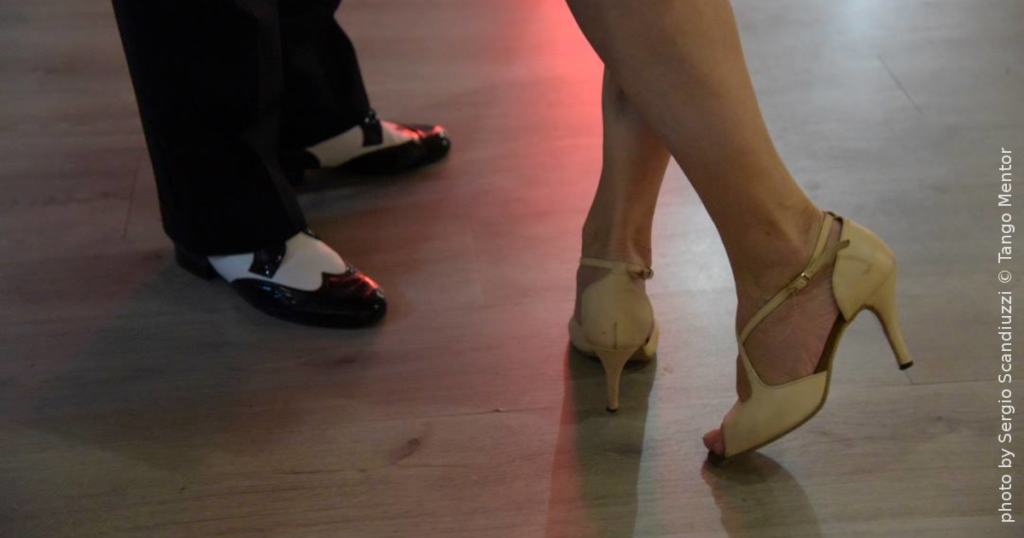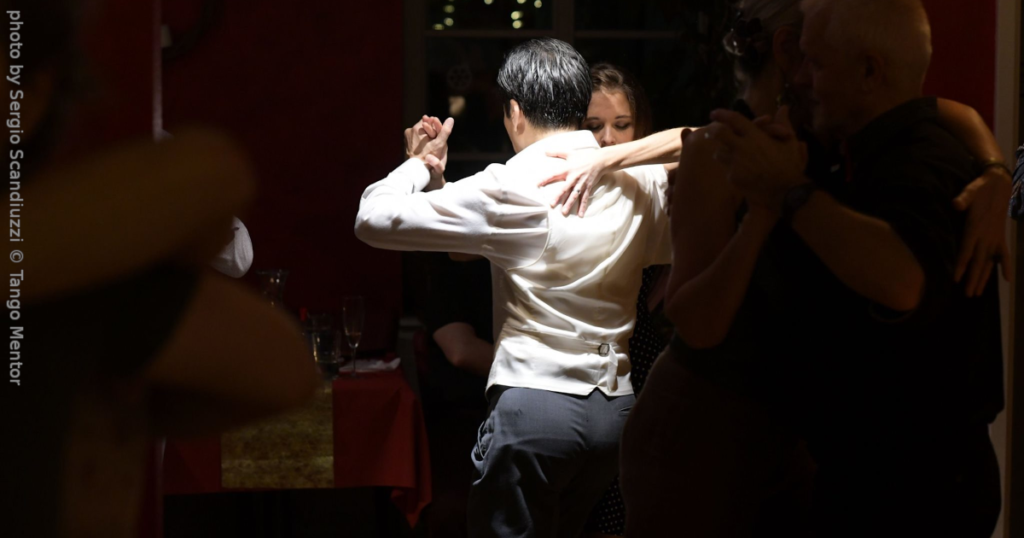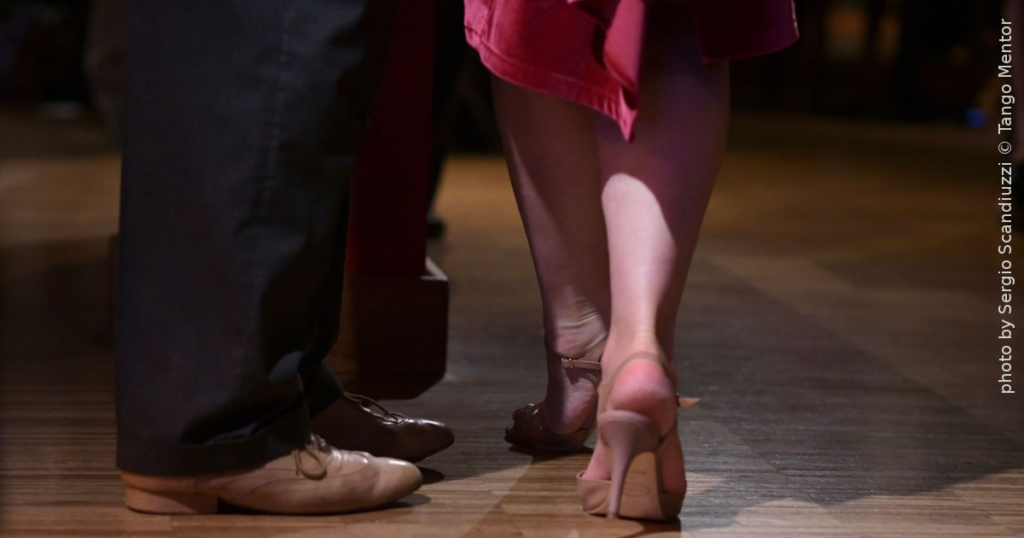
Before I answer the question of whether tango milonguero belongs on stage, you should understand exactly what I mean when I refer to stage and milonguero. Those of you who have read my article on “Why I Dance Milonguero” already know that I agree with dancers who believe there are only two styles of tango:
- Social tango, also known as tango salon or milonguero.
- Stage tango or escenario, which includes nuevo.
The difference, as I see it, lies in the intention: social tango is when dancers focus on their partners, while stage tango is when performers dance for the fancy moves and for the audience.
I strongly believe that stage tango doesn’t belong in milongas, and those who attempt to perform within the ronda should be politely asked to leave. Any decent organizer should do that!
On the other hand, should and can social dancing (milonguero) be performed?
Here is what Christos asked in the comments section of one of my articles:
“The way you describe it… milonguero seems somehow unattractive for a performance, since (as you point out) people dance it for themselves and not an audience and they don’t care much about how it looks. (BTW… I totally agree with that… The beauty of milonguero style is not easily seen from the outside… But it can be felt from the couple).
So do you think that more performances of such style could help in some way? Or do you think that performances in milonguero style go against the idea of dancing for yourself and not an audience? Could you somehow marry them?”
I completely agree with him and I asked myself this question as well many times. I will try to share my thoughts in this article.
Why should anyone perform Milonguero?
We should all be thankful to stage dancers and performers for popularizing tango and attracting people into the tango world. That said, we should also be aware of the kind of people they attract and the negative influence they have on how tango is danced at milongas.
People often form their initial impressions of tango from clichéd performers or Hollywood depictions, leading them to believe that tango requires physical abilities and special acrobatic talents. They then attend festivals where milongas are interrupted for show dancing, or simply watch videos of such performances.
Their mindset is that tango should be danced that way in milongas as well, so they pay for classes to learn to walk with huge steps, dance without subtle connection, and then add boleos, volcadas, ganchos, etc. They often fish for attention or amazement of their abilities or creativity… This idea of tango often attracts exhibitionists and is sometimes repellent to people with sensitivity.

I strongly believe that performances attract people to tango, yes, but they often attract the wrong people. The idea they convey creates an environment where often the most prominent and influential members are those who are the biggest exhibitionists and those with less sensitivity and respect for others on the dance floor.
Saying this, many unfortunately try to dance this way in milonga settings without actually being aware that it doesn’t belong there… Because many of them have never seen or considered a different way: the way of milongueros.
I can say this from my own experience: I struggled a lot and I even wanted to give up, since showing off on the dance floor felt fake and repulsive. But then I discovered the world of milonguero dancing and for me everything fell into place.
Learning was impossible without watching videos of milongueros dancing at milongas and… performing.
Oh, how grateful I am that they did and that now, when most of them are gone, we have preserved so much richness and authenticity.
So, yes, performing milonguero has huge benefits! I like watching it and I think all tangueros should watch milonguero performances rather than show dancing at festivals.
Unseen Benefits, Unheard Messages
If performing milonguero can improve the perception of tango, then why is the possibility of performing milonguero even a question, you may ask? The short answer is because it’s not made for an audience.
The most obvious upside of dancing milonguero for me is the emotional depth and possibility to connect with a person in an authentic way. We’re all aware that we live in a stressful world where we’re often feeling threatened by other people. That makes many of us closed down and depressed. Most of the time we keep people at a distance, and on the rare occasions we interact, we rarely do it in an intimate way.
No wonder, the word intimacy often evokes sexual context – although I have to say, we even succeeded in decoupling sex from intimacy.
There aren’t many blogs or websites out there that are trying to popularize milonguero and inform about its benefits. That’s why I ask you, if you feel this article provided you with some value, to consider making a small donation or gratuity. It helps keep the lights on.
From my heart to yours!
Ivica
Securely processed via PayPal
If I see the main benefits of dancing milonguero in authentic emotional connection with the partner, then the question is how it’s possible to showcase this abstract point? How can people watching see what dancers feel? How can dancers show what they feel?
Well, they can’t! I believe it’s one of those things that you must experience to understand.
Is it possible, then, to make people understand these benefits? Yes, but performing milonguero is just a small part of it.
I think that the most important thing is for teachers to make new dancers aware of this. Since they’re all beginners, they will have no way to understand at first, but it’s enough for them to be aware – so when they feel it, they will understand what it is.
Bargaining with the devil
When you dance for an audience, your dancing is not the same anymore. I noticed in my dancing at least that when I feel attention I grab steps and moves from the top shelf, I sometimes, I’m ashamed to say, even feel that I forget that I’m dancing with a partner.
And, it’s not just me – old milongueros used to say that when you dance for show, your tango angel dies. I wrote about it in this article:
Despite all this, I guess when you want to achieve the benefits I mentioned above, we sometimes have to “kill some angels”. It’s quite a delicate balance, but I believe it’s worth to make a deal with the devil in this case.
I am sure he will outsmart us and we will end up on the losing side, but the benefits are too important to neglect them. People need to see and be reminded of what’s possible.
The idea of performing milonguero may seem paradoxical, but it’s an opportunity to attract to tango people who value sensitivity and connection, people who prefer subtlety above exhibitionism.
The question about integrity versus a broader visibility has a simple answer: you bargain with the devil and hope you can repair the damage to your dancing later on.



